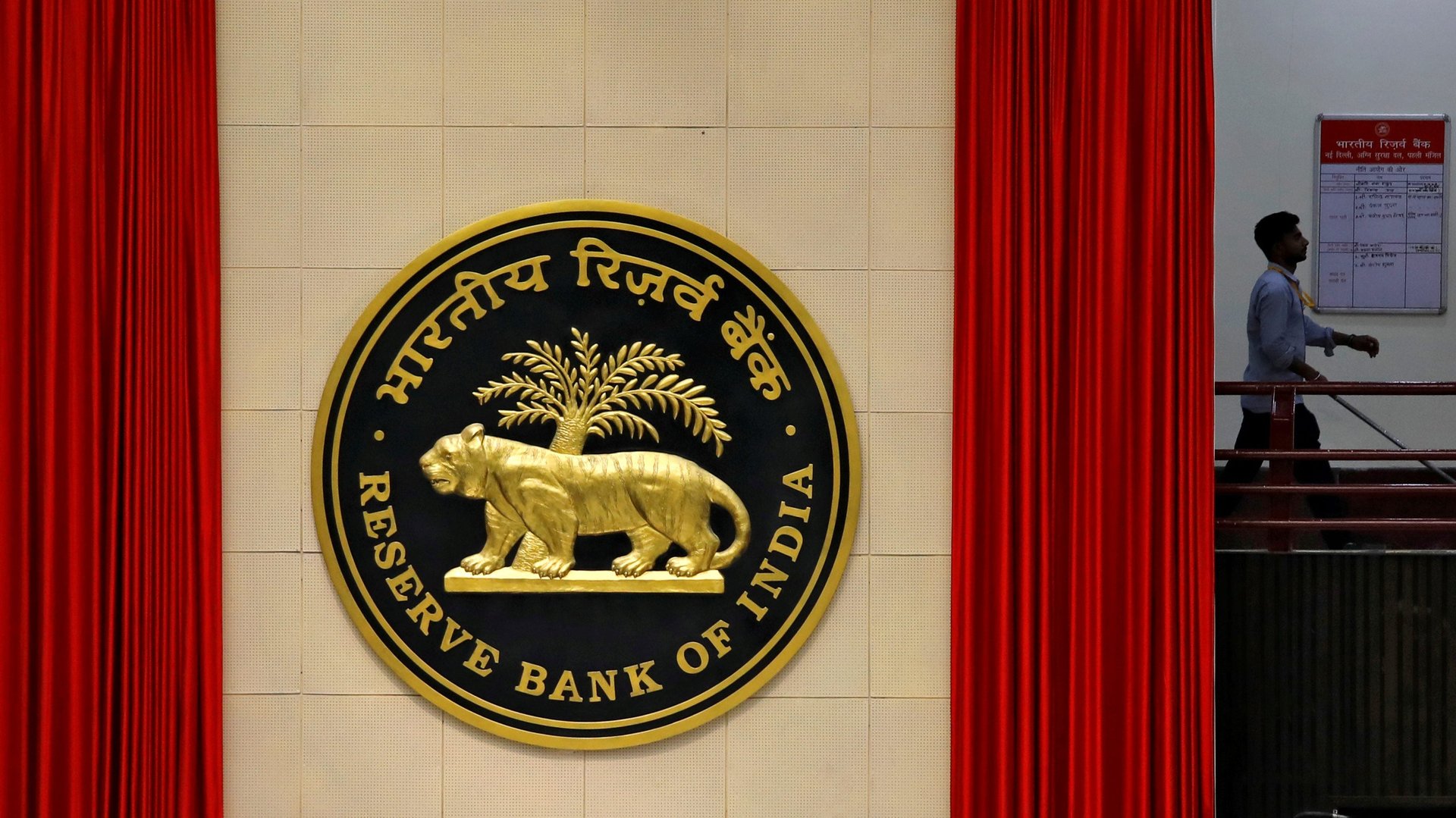India’s central bank may not have any golden eggs for the Modi government this budget
In the search for resources to make up for India’s sluggish tax revenue growth, one source to which finance minister Nirmala Sitharaman can legitimately turn to in her upcoming union budget is the country’s central bank.


In the search for resources to make up for India’s sluggish tax revenue growth, one source to which finance minister Nirmala Sitharaman can legitimately turn to in her upcoming union budget is the country’s central bank.
But the government’s draft on the Reserve Bank of India’s (RBI) funds cannot be arbitrary, at least for four more financial years.
The controversy over how much of the RBI’s annual surpluses it should retain, and how much should be transferred to the central government as “dividend,” was settled for five years by a committee chaired by former RBI governor Bimal Jalan in July last year.
When the aggregate surplus of the RBI is positive, the government has a legitimate claim on it as its dividend. Yet, the quantum of the dividend depends on how much the RBI seeks to retain, to beef up its “economic capital.”
The central bank’s economic capital is its reserve fund, required to ensures its resilience and facilitate interventions for monetary, financial and external stability. For example, in situations of banking system fragility, it must be able to provide the necessary emergency liquidity assistance, without hurting its own balance sheet.
Lower capital requirements
The surpluses with which the RBI can build its capital stem from two broad sources. One is from any positive revaluation of the foreign exchange and gold reserves it holds, which follows a depreciation of the rupee or increase in the price of bullion.
However, when these assets are valued at prevailing market prices, these surpluses are notional, with gains being realised only when the assets concerned are actually sold.
The second broad source of the RBI’s capital is the net income it earns when the returns on its investments, in government bonds or deposits abroad for example, exceed the costs of its liabilities.
Jalan committee recommended that adjustments of the principles governing the quantum of “economic capital” are needed only in the case of contingency funds created from the “realised equity” of the RBI, which results from the second source of surplus noted above.
When the committee submitted its report last year, “realised equity” with the RBI amounted to 6.8% of its assets. The committee, based on its estimation of what was required to address potential risks, recommended that this be reduced to between 5.5% and 6.5% of the RBI’s balance sheet.
Influenced by the Narendra Modi government, the RBI opted for the lower 5.5% figure.
More resources to government
This had two implications. The first was that the existing sum in the contingency fund was in excess to the tune of 1.3% of the RBI’s then balance sheet. That excess, amounting to Rs52,637 crore ($7 billion), could be immediately transferred out and be reclassified as income. None of the surplus available in 2018-19 had to be set aside to meet the revised economic capital requirements of the central bank.
The second implication was that, in future, after a part of any annual realised surplus is set aside to cover shortfalls in economic capital relative to that required to keep the contingency fund at 5.5% of a growing balance sheet, the balance can be transferred to the government.
Since the reduction of the required ratio to 5.5% would reduce surplus retention by the RBI when compared to the past, the government would have access to more resources at any given level of the balance sheet of the central bank.
The resolution of the controversy gave the Modi government a bonanza of over Rs1.75 lakh crore in 2018-19. There were two components in that bonanza. One was a once-for-all pay off of Rs52,637 crore, which was the “excess capital” that the RBI had accumulated over time in its contingency fund, when assessed using the new guidelines recommended by the Jalan committee.
The other was a sum of Rs1.23 lakh crore which the RBI transferred to the government, which was almost the whole of the net income in the previous year 2017-18. This too was some kind of a bonanza, since the RBI’s net income in 2017-18 was only Rs50,004 crore and the average net income over the four years ending 2017-18 stood at Rs53,112 crore.
In sum, the huge transfer was in substantial measure made possible by a convenient 250% increase in its net income that year.
No bonanza this year
Financial year 2019-20 is unlikely to be so favourable. The government will not get the once-for-all bonanza resulting from reclassification of a part of the contingency fund reserve as income. It is unlikely also to obtain the windfall increase in net income that characterised 2017-18.
For similar reasons, the finance minister cannot credibly provide in Budget 2020 a dividend from the central bank of the magnitude recorded in 2018-19. Resources from the RBI to plug the deficit in the budget are bound to shrink.
We welcome your comments at [email protected].